
HMS Black Prince was the third ship of that name to serve with the Royal Navy. She was the world's second ocean-going, iron-hulled, armoured warship, following her sister ship, HMS Warrior. For a brief period the two Warrior-class ironclads were the most powerful warships in the world, being virtually impregnable to the naval guns of the time. Rapid advances in naval technology left Black Prince and her sister obsolete within a short time, however, and she spent more time in reserve and training roles than in first-line service.

HMS Minotaur was the lead ship of the Minotaur-class armoured frigates built for the Royal Navy during the 1860s. They were the longest single-screw warships ever built. Minotaur took nearly four years between her launching and commissioning because she was used for evaluations of her armament and different sailing rigs.

The eighth HMS Shannon was the first British armoured cruiser. She was the last Royal Navy ironclad to be built which had a propeller that could be hoisted out of the water to reduce drag when she was under sail, and the first to have an armoured deck.

The Minotaur class was a three-ship class of armoured cruisers built in the first decade of the twentieth century for the Royal Navy. These were the last class of armoured cruisers built for the Royal Navy, with that role being substantially replaced by battlecruisers. These initially served with the Home Fleet, generally as the flagships of cruiser squadrons. Minotaur became flagship of the China Station in 1910 and Defence served as flagship of the 1st Cruiser Squadron in the Mediterranean from 1912; Shannon remained at home as flagship of several different squadrons.
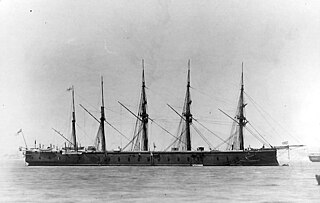
HMS Northumberland was the last of the three Minotaur-class armoured frigates built for the Royal Navy during the 1860s. She had a different armour scheme and heavier armament than her sister ships, and was generally regarded as a half-sister to the other ships of the class. The ship spent her career with the Channel Squadron and occasionally served as a flagship. Northumberland was placed in reserve in 1890 and became a training ship in 1898. She was converted into a coal hulk in 1909 and sold in 1927, although the ship was not scrapped until 1935.

HMSZealous was one of the three ships forming the second group of wooden steam battleships selected in 1860 for conversion to ironclads. This was done in response to the perceived threat to Britain offered by the large French ironclad building programme. The ship was ordered to the West Coast of Canada after she was completed to represent British interests in the Eastern Pacific Ocean. Zealous became the flagship for the Pacific Station for six years until she was relieved in 1872. She was refitted upon her arrival and subsequently became the guard ship at Southampton until she was paid off in 1875. The ship was in reserve until she was sold for scrap in 1886.

HMS Collingwood was the lead ship of her class of ironclad battleships built for the Royal Navy during the 1880s. The ship's essential design became the standard for most of the following British battleships. Completed in 1887, she spent the next two years in reserve before she was assigned to the Mediterranean Fleet for the next eight years. After returning home in 1897, the ship spent the next six years as a guardship in Ireland. Collingwood was not significantly damaged during an accidental collision in 1899 and was paid off four years later. The ship was sold for scrap in 1909 and subsequently broken up.
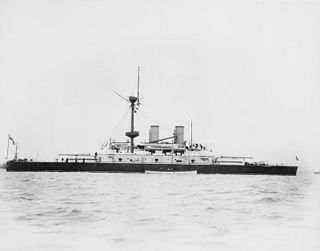
HMS Howe was an Admiral-class ironclad battleship built for the Royal Navy during the 1880s. The ship was assigned to the Channel Fleet in mid-1890 and was badly damaged when she ran aground in late 1892. After repairs were completed, Howe was transferred to the Mediterranean Fleet in late 1893. She returned home in late 1896 and became a guardship in Ireland. Howe remained there until late 1901 when she was assigned to the Reserve Fleet. The ship was paid off in three years later and then sold for scrap in 1910.

HMS Anson was the last of six Admiral-class ironclad battleships built for the Royal Navy during the 1880s. The ship was completed, except for her armament, in 1887, but had to wait two years for her guns to be installed. She was assigned to the Channel Fleet in mid-1889 as a flagship for the fleet's second-in-command. Two years later, the passenger ship SS Utopia sank with the loss of 562 lives after colliding with Anson in the Bay of Gibraltar. In mid-1893, Anson was transferred to the Mediterranean Fleet, subsequently returning home in 1900 when she was assigned to the Reserve Fleet. She recommissioned for the Home Fleet in early 1901. Anson was paid off three years later and then sold for scrap in 1909.

HMS Nelson was a Nelson-class armoured cruiser built for the Royal Navy in the 1870s. She was sold for scrap in 1910.

HMS Repulse was one of seven Royal Sovereign-class pre-dreadnought battleships built for the Royal Navy in the 1890s. Assigned to the Channel Fleet, where she often served as a flagship, after commissioning in 1894, the ship participated in a series of annual manoeuvres, and the Queen Victoria's Diamond Jubilee Fleet Review during the rest of the decade. Repulse was transferred to the Mediterranean Fleet in 1902 and remained there until December 1903, when she returned home for an extensive refit. After its completion in 1905, Repulse was assigned to the Reserve Fleet until she was sold for scrap in 1911.

HMS Shannon was a Minotaur-class armoured cruiser built for the Royal Navy in the mid-1900s. Before the First World War, she served with the Home Fleet, generally as the flagship of a cruiser squadron. The ship remained with the Grand Fleet, as the Home Fleet was renamed when the war began, for the entire war, but only participated in a single battle, the Battle of Jutland in May 1916. Shannon spent most of the war unsuccessfully patrolling the North Sea for German warships and commerce raiders. She was paid off in 1919 and sold for scrap in 1922.
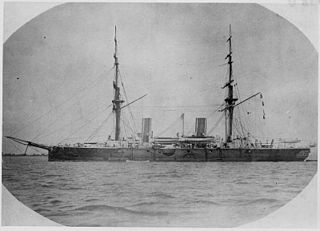
HMS Imperieuse was the lead ship of her class of two armoured cruisers built for the Royal Navy in the 1880s. She was sold for scrap in 1913.
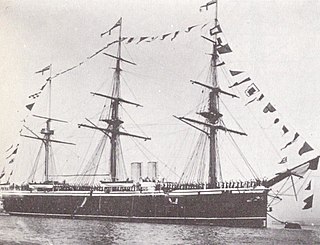
HMS Northampton was a Nelson-class armoured cruiser built for the Royal Navy in the 1870s. She was sold for scrap in 1905.

HMS Royal Sovereign was the lead ship of the seven ships in her class of pre-dreadnought battleships built for the Royal Navy in the 1890s. The ship was commissioned in 1892 and served as the flagship of the Channel Fleet for the next five years. She was transferred to the Mediterranean Fleet in 1897 and returned home in 1902, and was briefly assigned as a coast guard ship before she began a lengthy refit in 1903–1904. Royal Sovereign was reduced to reserve in 1905 and was taken out of service in 1909. The ship was sold for scrap four years later and subsequently broken up in Italy.
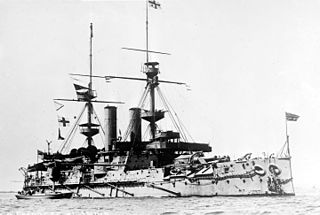
HMS Empress of India was one of seven Royal Sovereign-class pre-dreadnought battleships built for the Royal Navy during the 1890s. The ship was commissioned in 1893 and served as the flagship of the second-in-command of the Channel Fleet for two years. She was transferred to the Mediterranean Fleet in 1897, during which time Empress of India was assigned to the International Squadron blockading Crete during the uprising there. She returned home in 1901 and was briefly assigned as a coast guard ship in Ireland before she became the second flagship of the Home Fleet. The ship was reduced to reserve in 1905 and accidentally collided with the submarine HMS A10 the following year. Empress of India was taken out of service in early 1912 and accidentally struck a German sailing ship while under tow. She was sunk as a target ship in 1913.

HMS Royal Oak was one of seven Royal Sovereign-class pre-dreadnought battleships built for the Royal Navy during the 1890s. Upon her completion in 1894, she was initially placed in reserve until mobilised in 1896 for service with the Flying Squadron. After returning briefly to reserve, the ship was assigned the following year to the Mediterranean Fleet. Royal Oak remained there until 1902 when she returned home; after a refit, the ship was assigned to the Home Fleet, where she served as the flagship of the fleet's second-in-command in 1904–05. Royal Oak was then reduced to reserve until she was taken out of service in 1911. The ship was sold for scrap in early 1914.

The Centurion-class battleships were a pair of pre-dreadnought battleships built for the Royal Navy in the 1890s. They were rated as second-class battleships because they were less heavily armed and armoured than the first-class battleships. They were designed for service abroad and were given higher speed and longer range to counter the armoured cruisers then being built as commerce raiders.

HMS Barfleur was the second and last of the Centurion-class pre-dreadnought battleships built for the Royal Navy in the 1890s. Intended for service abroad, they exchanged heavy armour and a powerful armament for high speed and long range to counter the foreign armoured cruisers then being built as commerce raiders and were rated as second-class battleships.

HMS Renown was a second-class predreadnought battleship built for the Royal Navy in the early 1890s. Intended to command cruiser squadrons operating on foreign stations, the ship served as the flagship of the North America and West Indies Station and the Mediterranean Fleet early in her career. Becoming obsolete as cruiser speeds increased, Renown became a royal yacht and had all of her secondary armament removed to make her more suitable for such duties. She became a stoker's training ship in 1909 and was listed for disposal in 1913. The ship was sold for scrap in early 1914.




















